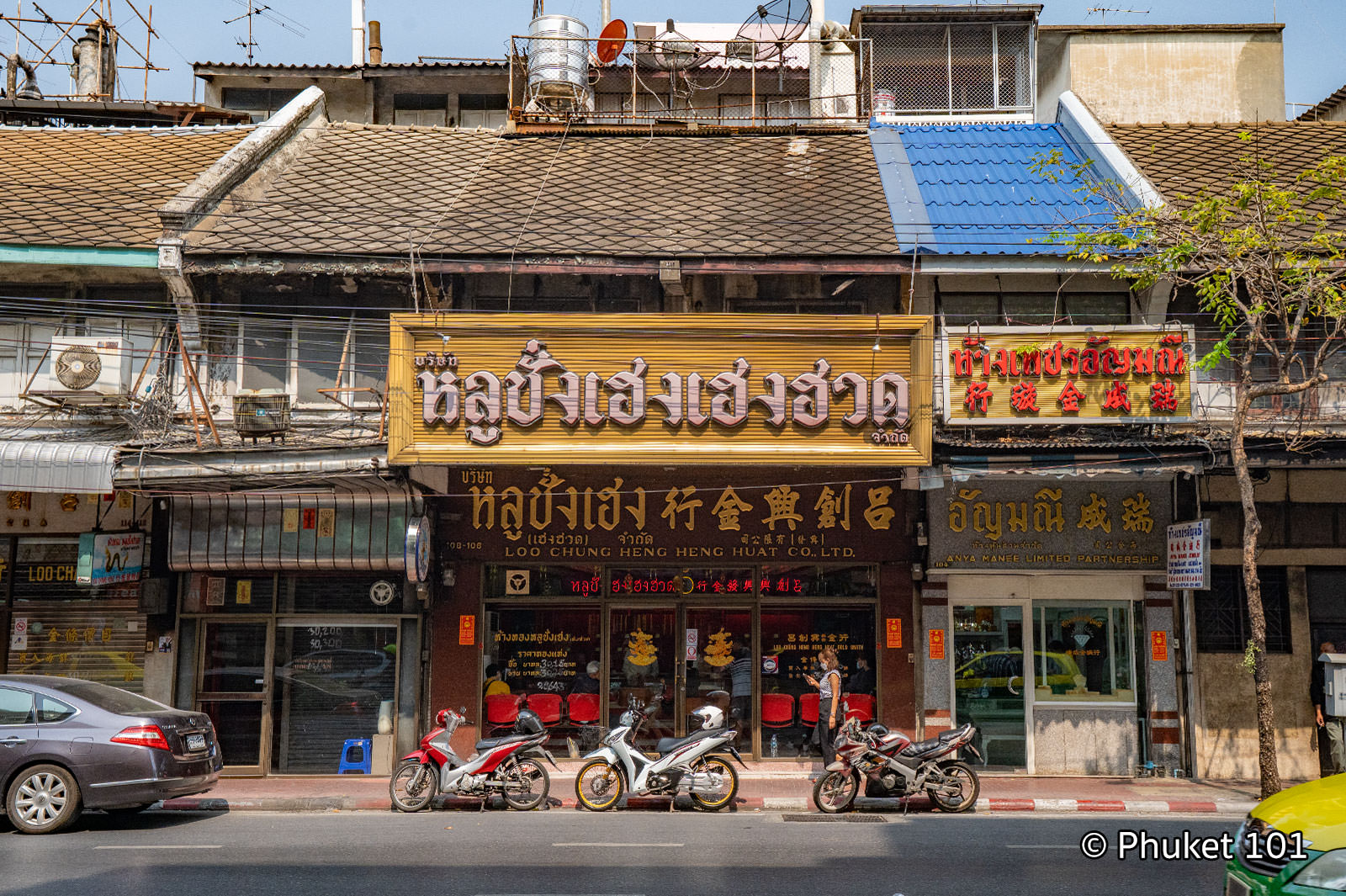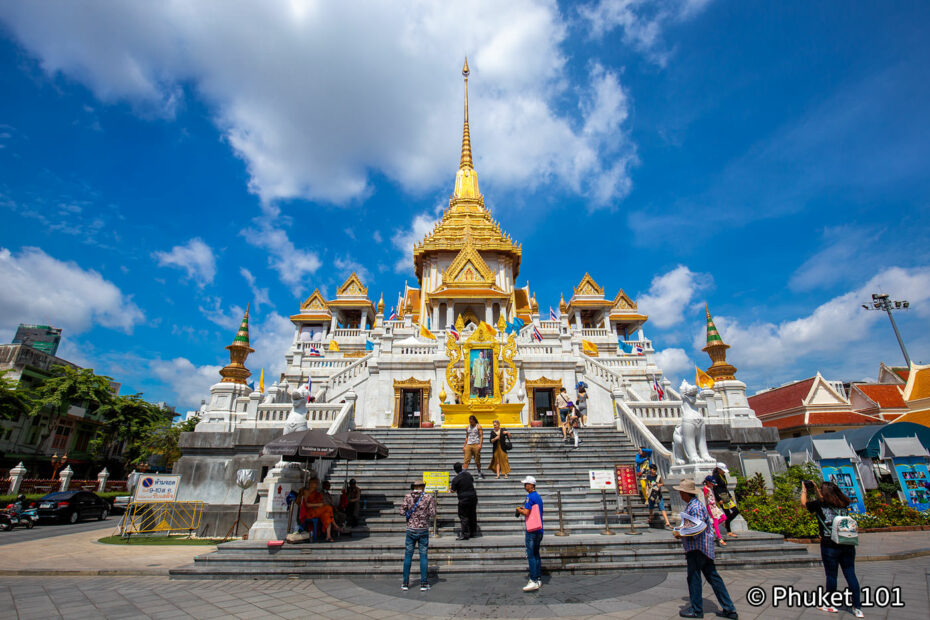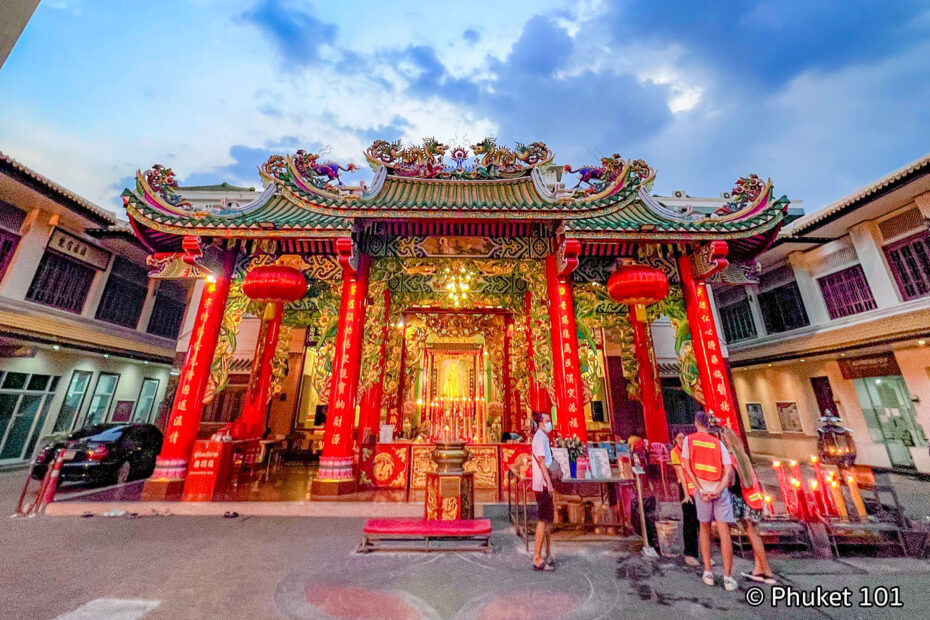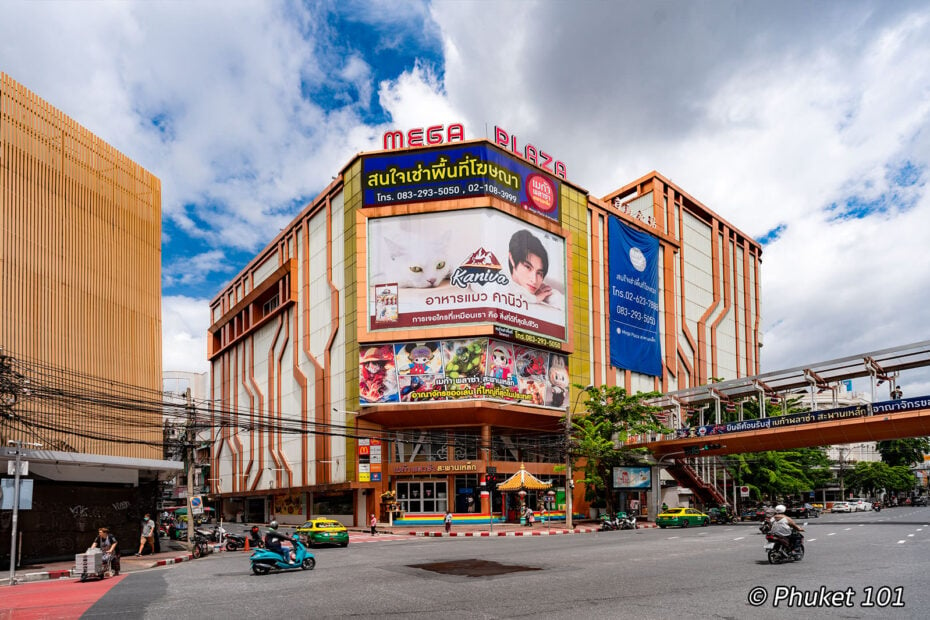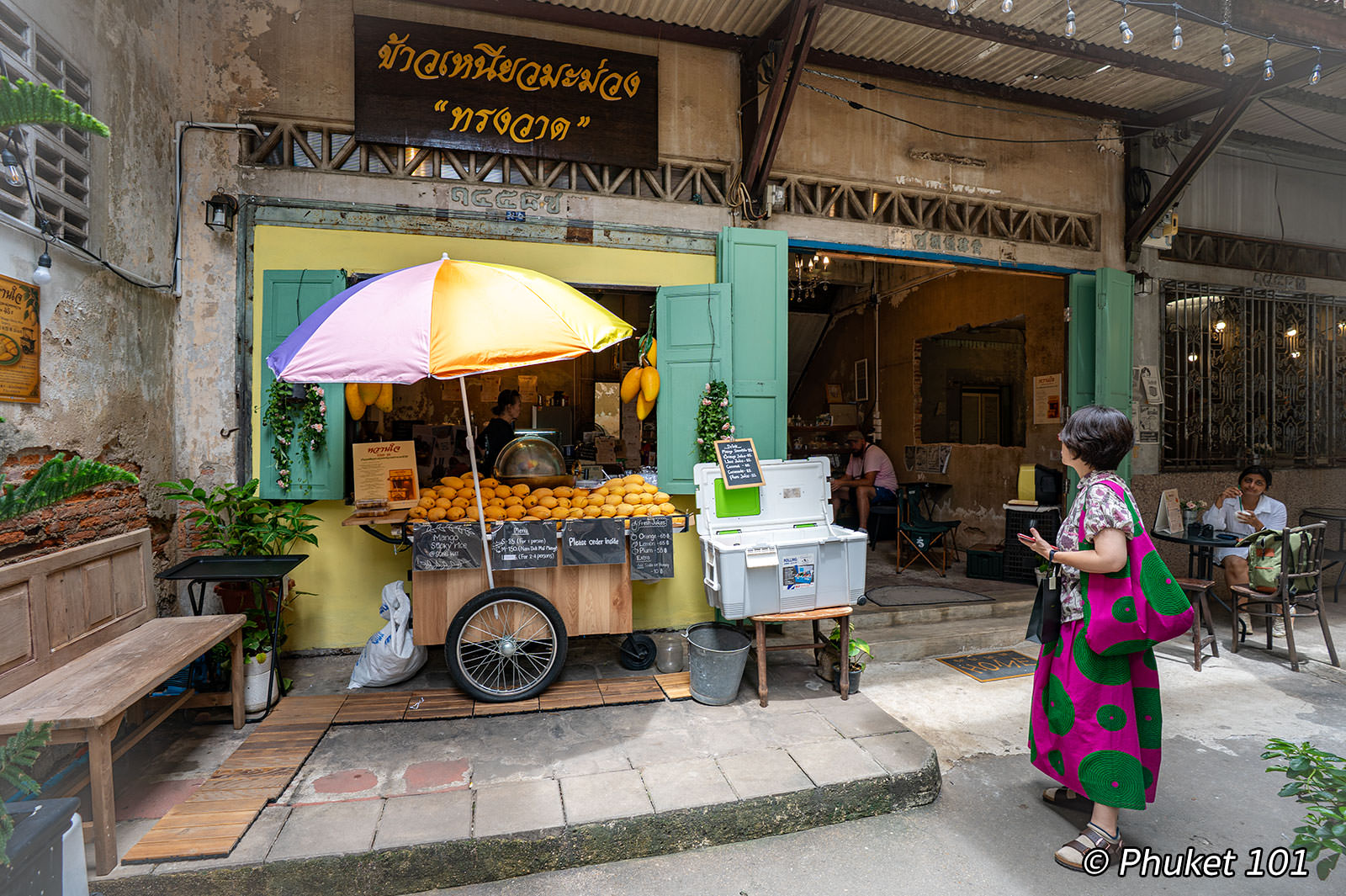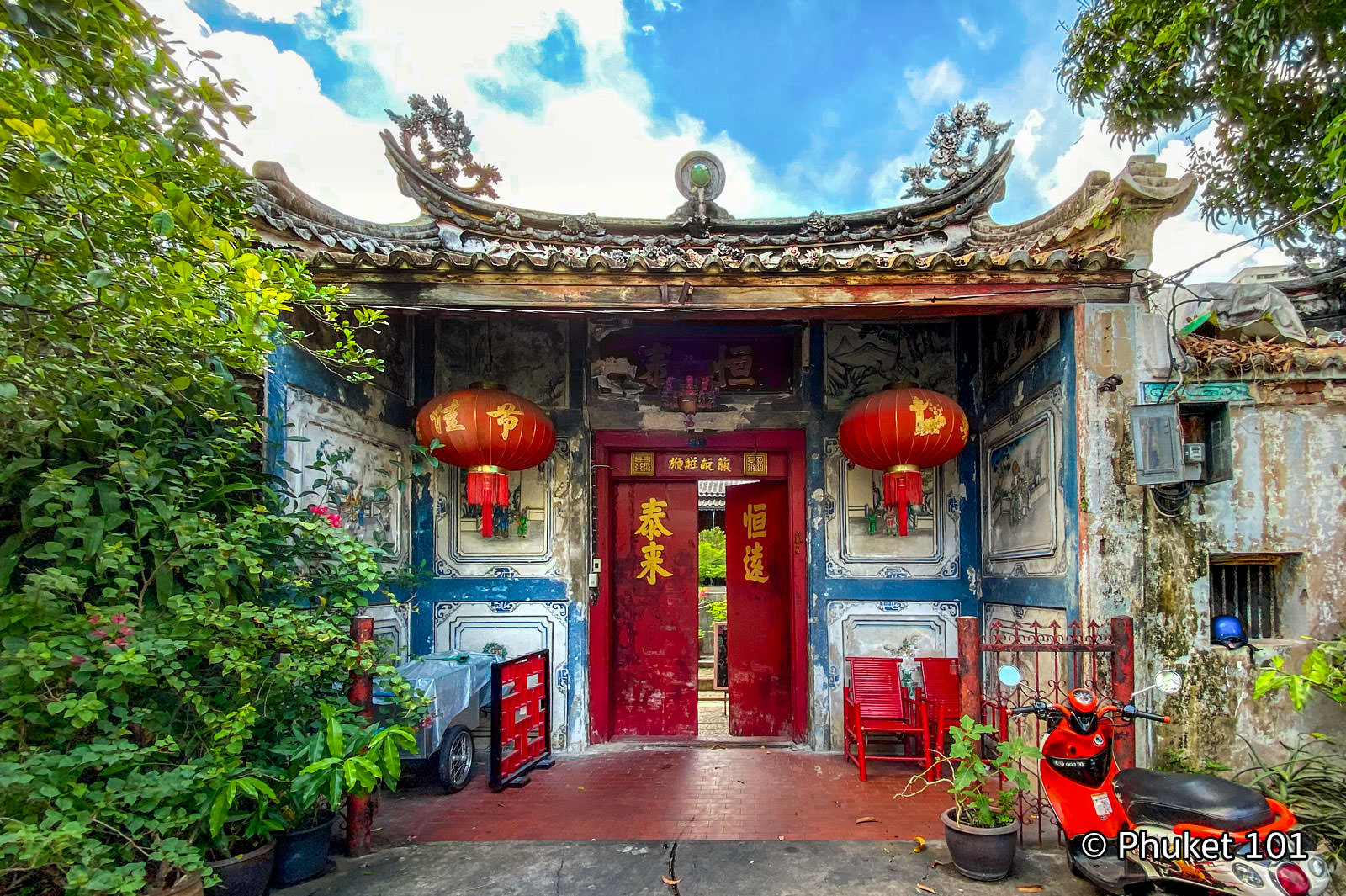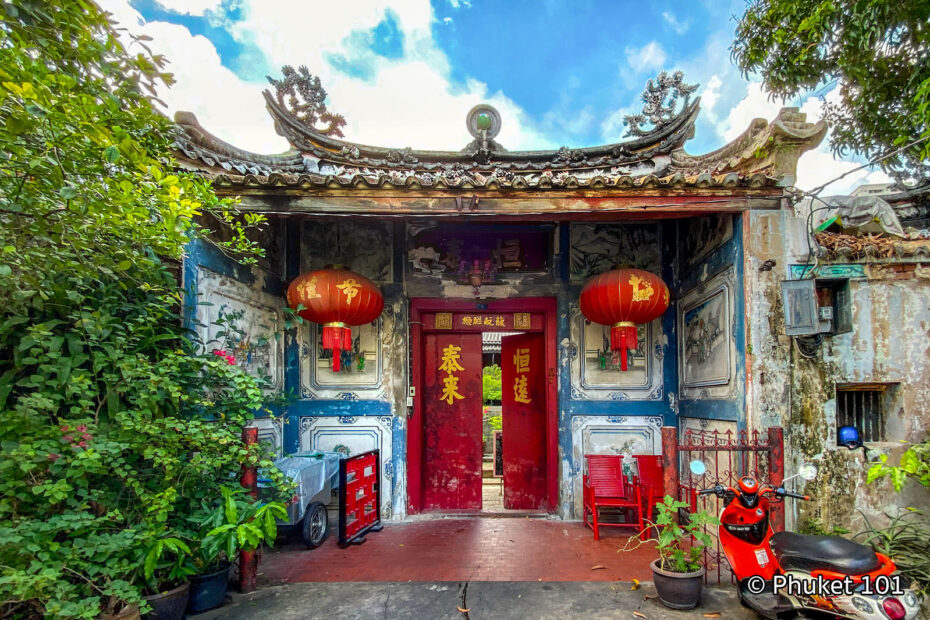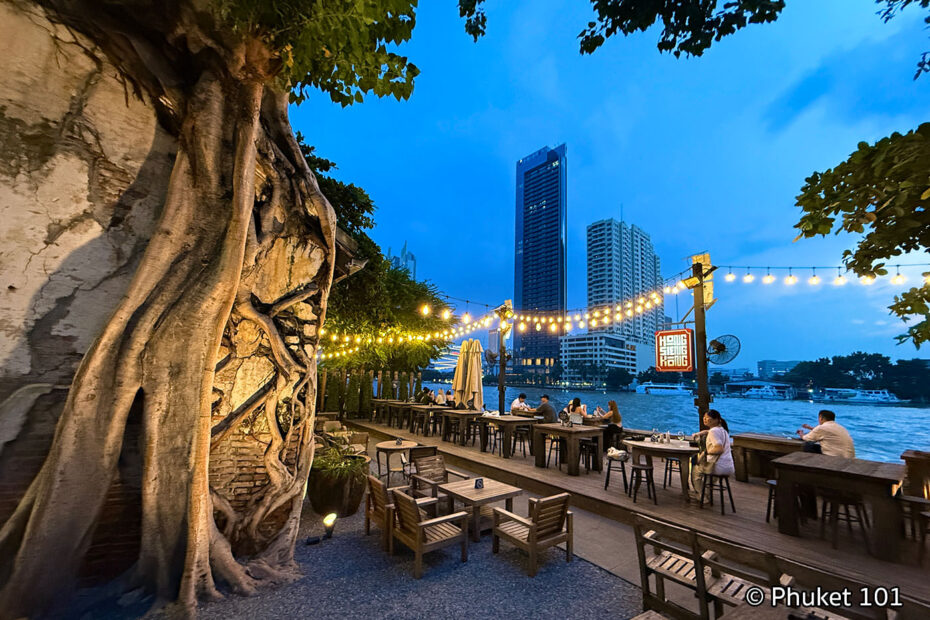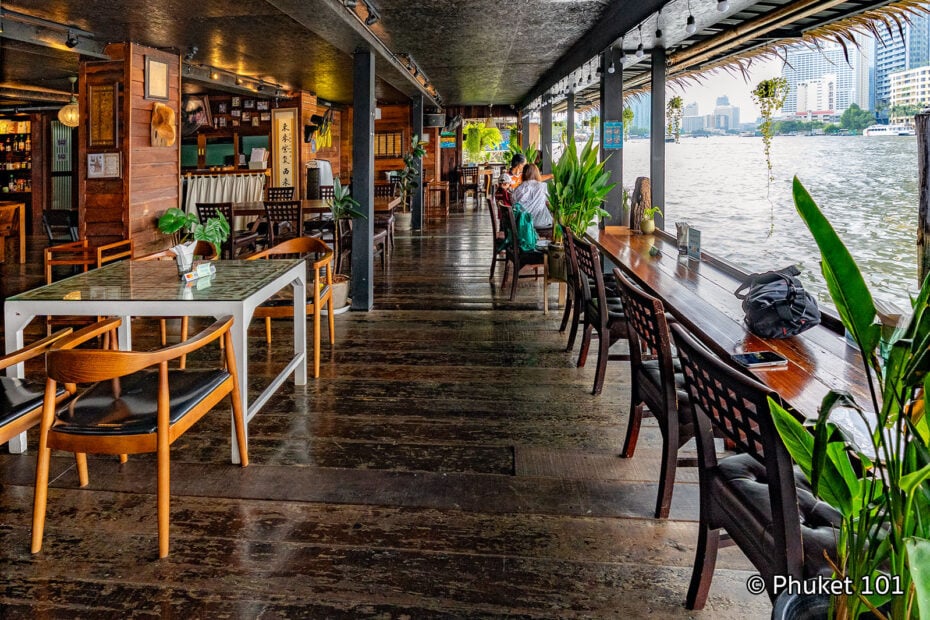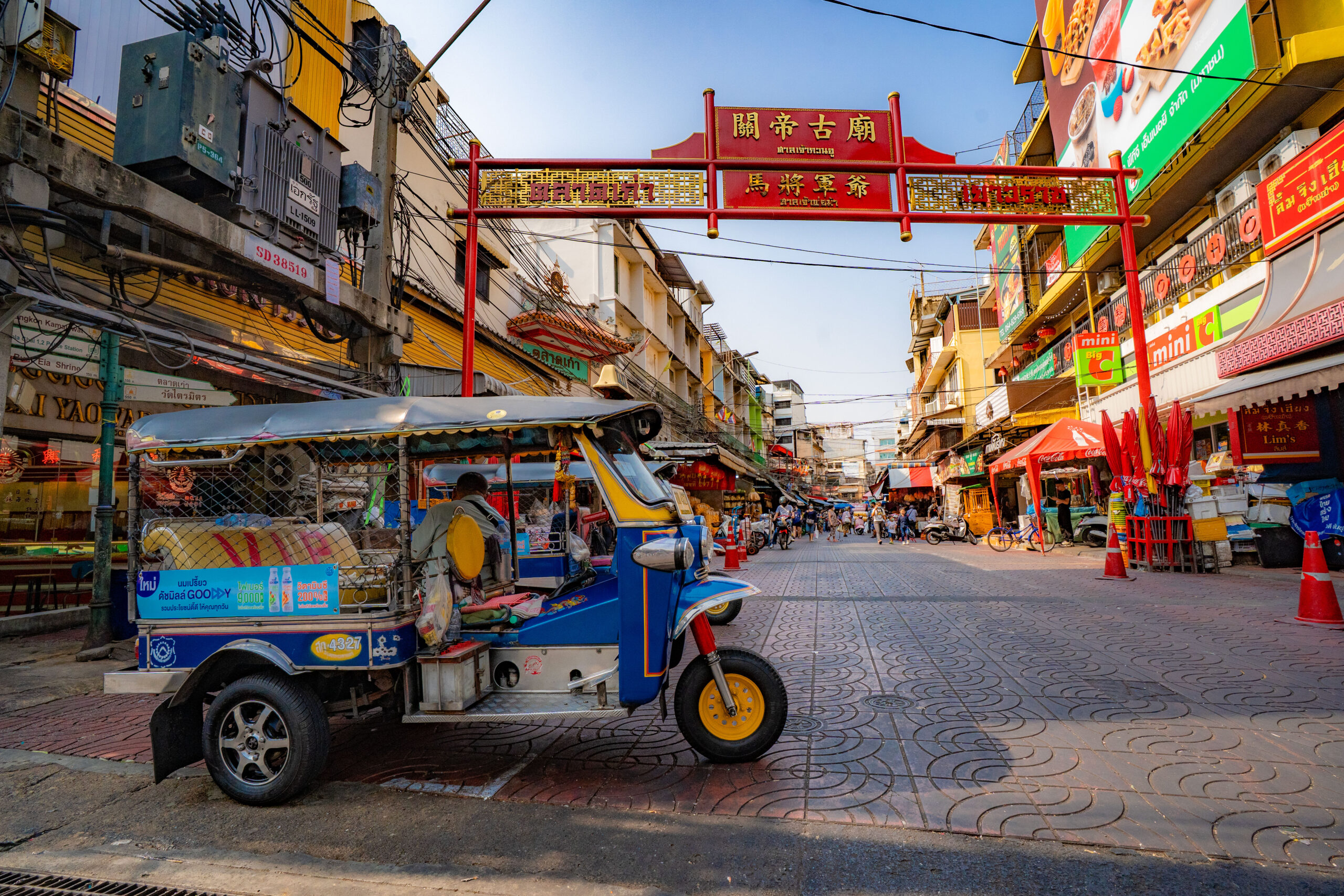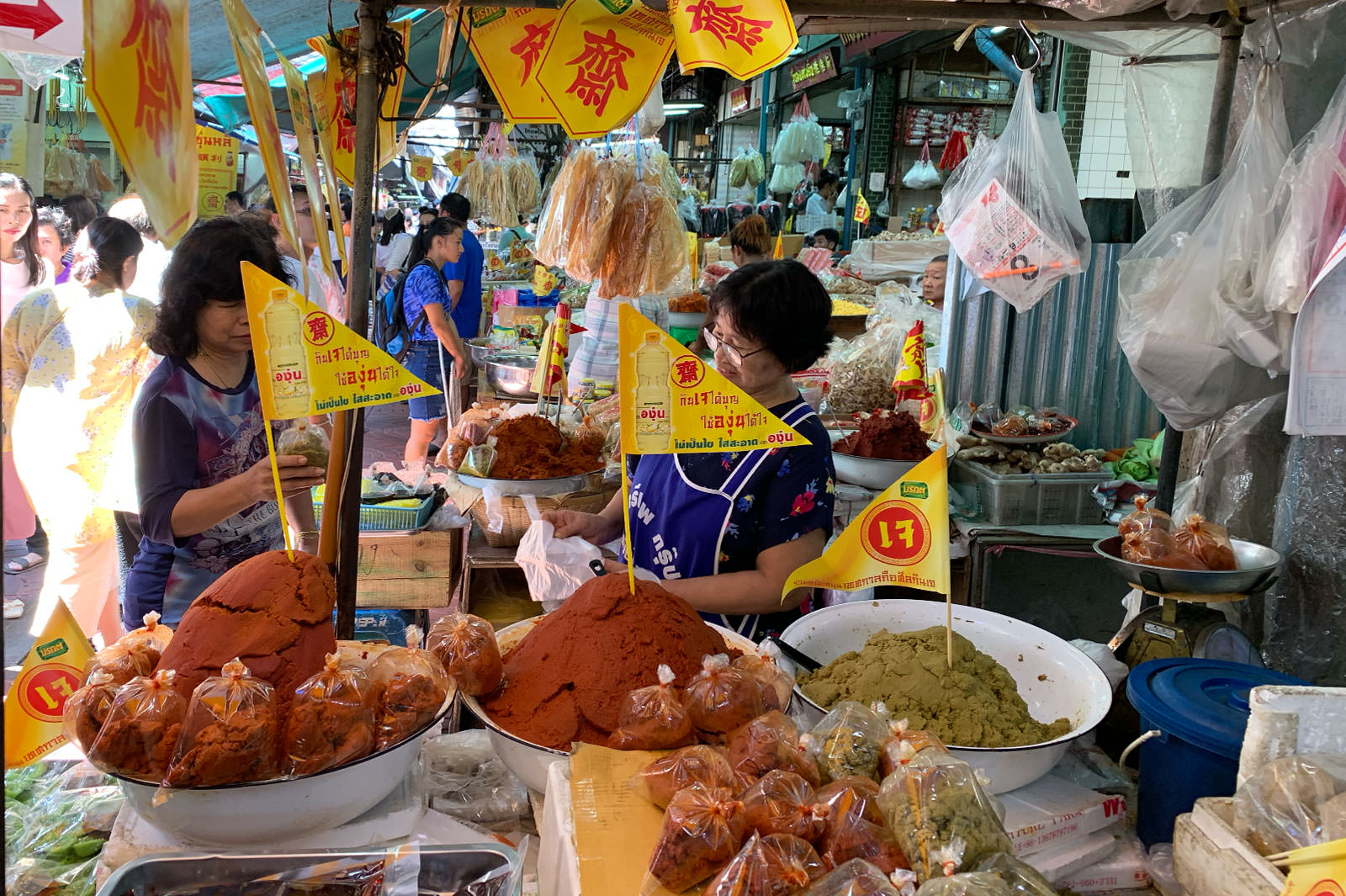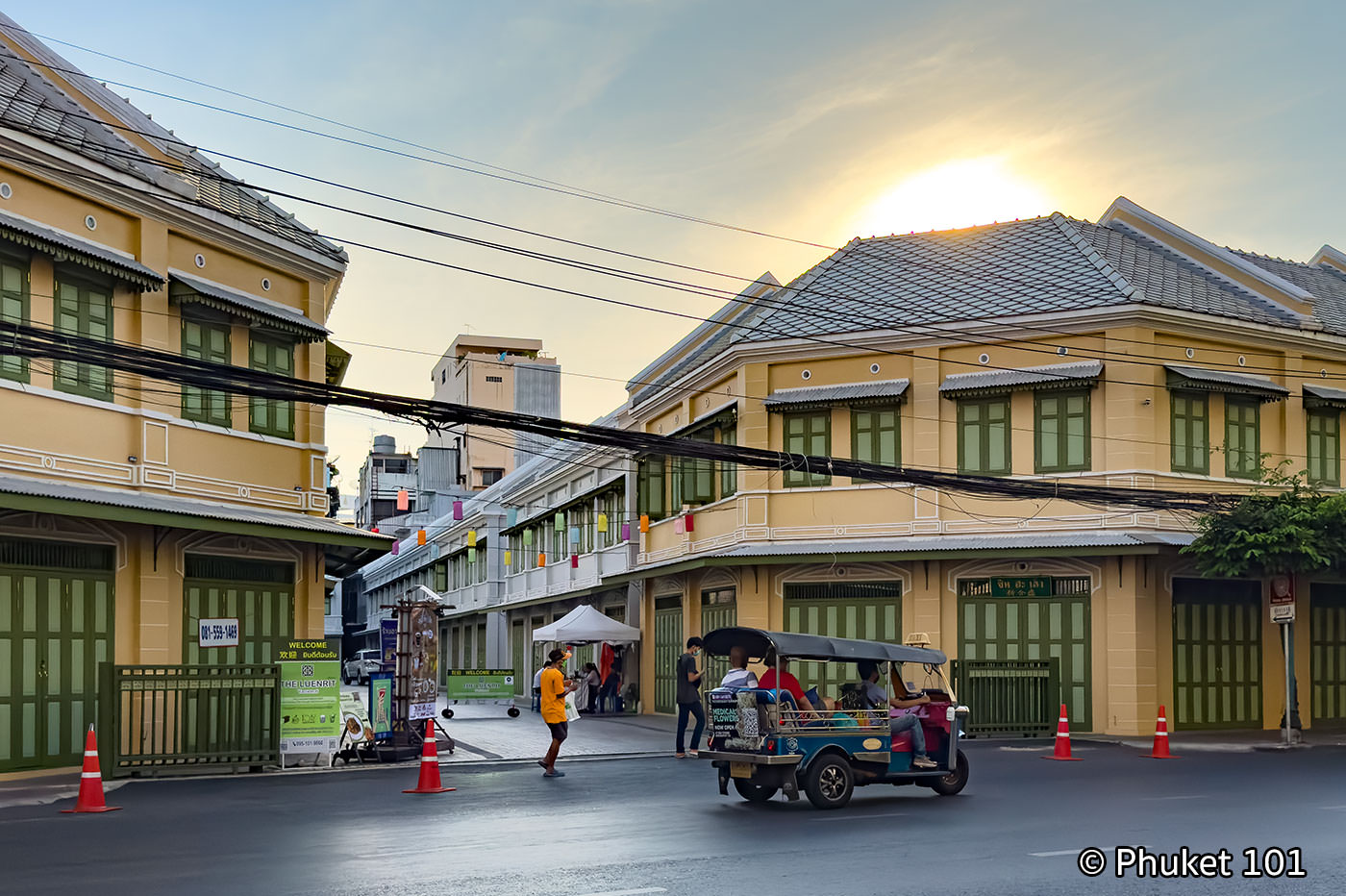Explore the Amazing Streets of Chinatown
Bangkok’s Chinatown centres around several distinct streets, each offering a different slice of the neighbourhood’s character. Yaowarat Road forms the main artery, famous for its gold shops and evening street food scene. Running parallel behind it, Sampeng Lane operates as a narrow wholesale alley packed with fabric shops, jewellery vendors, and old Vespas used for deliveries.
Ong Ang Walking Street sits at Chinatown‘s edge along a canal, hosting a weekend night market with Thai food on one side and Indian restaurants on the opposite bank. Song Wat Road, once a forgotten trading street, transformed into a trendy riverside neighbourhood with speciality coffee shops and restored Sino-Portuguese shophouses alongside century-old businesses.
Talat Noi, meaning “small market,” predates Bangkok itself and features street art, Gothic churches, and mechanic workshops converted into cafés. Talat Mai, tucked between main roads, is a 200-year-old walking market selling Chinese herbs, dried seafood, and traditional goods in a cramped, atmospheric alley barely wide enough for two people to pass.
Yaowarat Road
Yaowarat Road in Bangkok Chinatown are one of the oldest Chinese communities in Thailand and is always an attraction, ranking high on any traveller’s list of things to see in Bangkok. And it should! Yaowarat, Sampeng Lane and all the small shopping streets around are buzzing with activity day and night. It’s a gigantic market made of tiny shops packed against each other for almost a square kilometre. It’s crowded, very hot, fun and utterly eclectic, selling everything from wholesale fabric to fashion accessories and cooking equipment.
More Places to Visit on Yaowarat
Song Wat Road
Song Wat Road, running parallel to Yaowarat Road in Chinatown, transformed from a forgotten trading street into Time Out magazine’s 39th coolest neighbourhood worldwide. Named after King Rama V, who drew its path in 1906, the 1.2-kilometre stretch once housed Bangkok’s rice and spice trade in Sino-Portuguese shophouses. After decades of decline following the 1950s port opening, the street’s renaissance began around 2016 with street art, including Belgian artist ROA’s famous elephant mural. The Made in Song Wat community initiative coordinated this transformation, growing from 10 to over 60 establishments. Today, speciality coffee roasters, experimental cafés, and Thai restaurants coexist with century-old businesses like Gu Long Bao’s five-generation steamed buns and Urai Braised Goose’s 50-year operation, creating a unique blend of old and new along the Chao Phraya River.
Talat Noi
Talat Noi, meaning “small market”, is a historic neighbourhood next to Bangkok’s Chinatown on the Chao Phraya River’s west bank. Dating back to the late 19th century, it was once a thriving commercial and industrial hub, now known for its blend of Chinese and Thai cultures, heritage buildings, and street art.
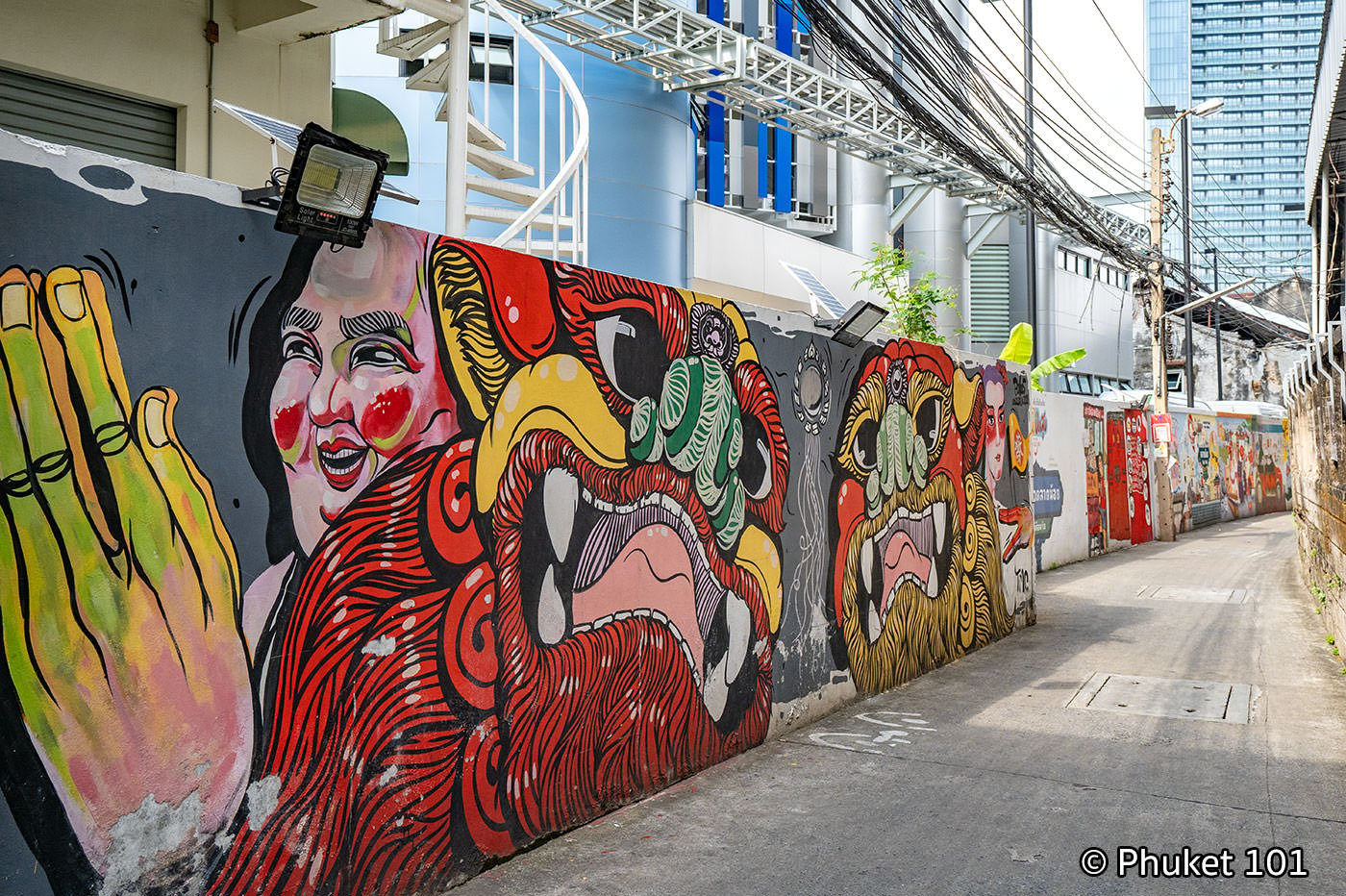
Key landmarks include the 1804 Chow Sue Kong Shrine, So Heng Tai Mansion showcasing Chinese-European architecture, the 1908 Siam Commercial Bank building in Beaux-Arts style, and the Gothic Holy Rosary Church built between 1891 and 1897. The narrow lanes feature colourful murals, traditional shophouses, and repurposed mechanic workshops now housing trendy cafés like Mother Roaster. Riverside spots include Hong Sieng Kong café and Naam 1608 restaurant, whilst River City offers antique shops and art galleries with panoramic river views.
More Photos
More places to visit in Talat Noi
Sampeng Lane
Sampeng Market is a narrow, bustling alley behind Yaowarat Road in Bangkok’s Chinatown. The tightly packed wholesale shops sell fabric, jewellery, buttons, toys, phone cases, and household goods, though single items can often be purchased. Old Vespas in various colours fill every corner, primarily used for fabric deliveries across the city. Push carts selling snacks, fruit, and local dishes line the path. The market offers clothes, jewellery, makeup, toys, tourist items, and street food, with mostly permanent stores rather than temporary stalls.
Ong Ang Walking Street

Ong Ang Walking Street, or Khlong Ong Ang Night Market, is a popular shopping and dining destination at the end of Bangkok’s Chinatown, located along a canal. The market features vendors selling fresh produce, seafood, clothing, souvenirs, and household items through narrow alleyways. The dining scene is a main highlight, with food vendors along the canal serving Thai dishes like pad thai, grilled seafood, mango sticky rice, pork leg stews, and noodle soups on the Chinatown side, whilst the opposite side near Paruhat Market offers excellent Indian restaurants. Visitors dine on plastic stools, enjoying casual, lively atmospheres with frequent live performances by singers and street dancers.
Talad Mai
Talat Mai, or “New Market,” is a narrow walking street market in Bangkok’s Chinatown, located between Charoen Krung and Yaowarat Road. Despite its name, the market has operated for over 200 years and preserves a traditional Chinese atmosphere. The cramped alley is filled with stalls selling Chinese herbs, dried seafood, incense, tea leaves, goji berries, lotus seeds, and funeral paper offerings. The air carries scents of incense, mushrooms, and food from nearby carts. Since the nearby MRT Wat Mangkon station opened, foot traffic has risen. Talat Mai is lively, chaotic, and untouched by modern trends, offering an authentic market experience.
Luenrit Yaowarat
Luenrit Yaowarat is a newly renovated area in Bangkok’s Chinatown, just a short distance from the bustling Yaowarat Road. The project aims to preserve the original architecture of the traditional shophouses, giving visitors a glimpse of the area’s historic charm. Despite its recent opening to the public, Luenrit Yaowarat remains quiet and peaceful compared to the lively and chaotic vibe of Chinatown’s main streets.

